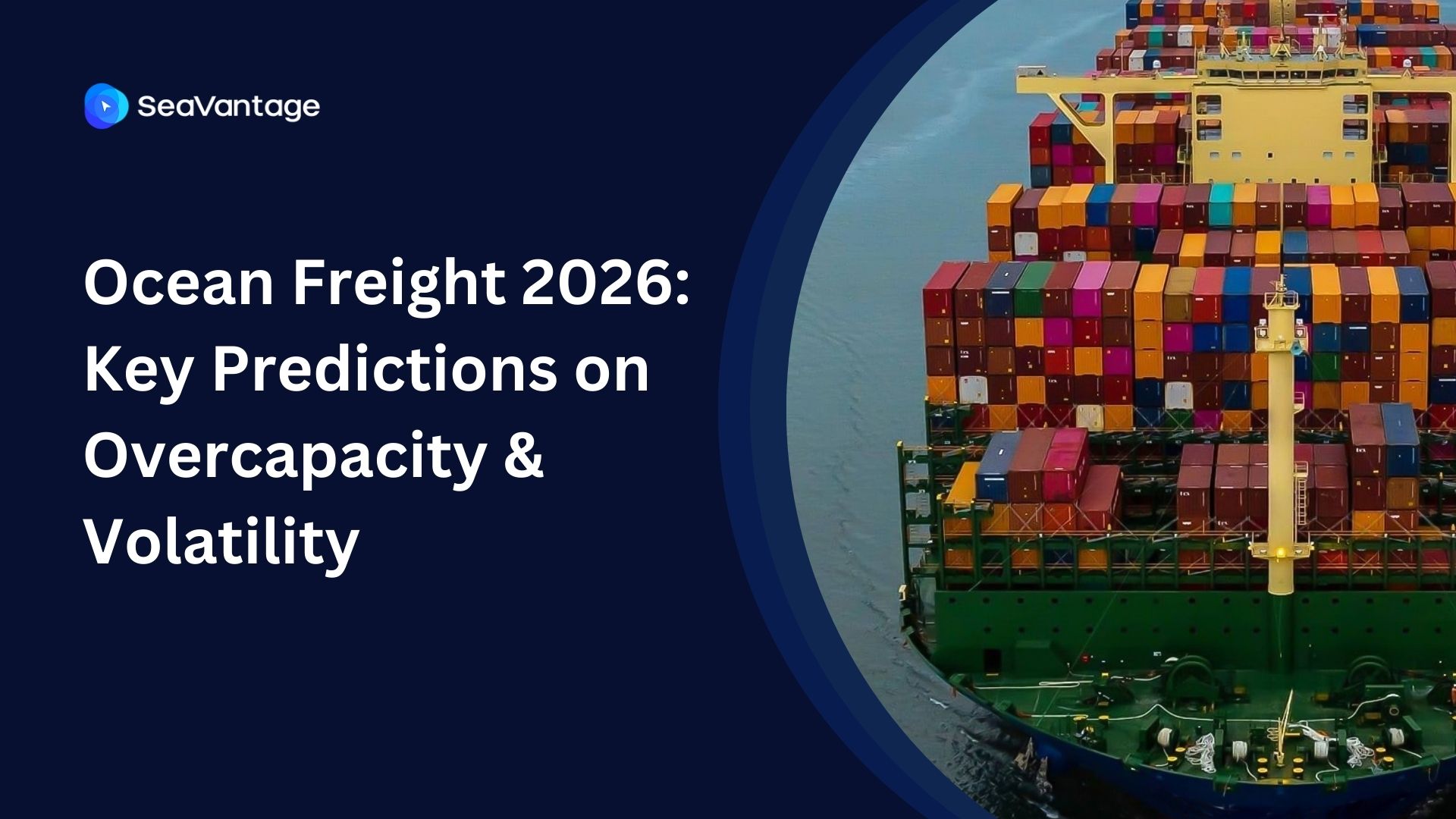How to Track Container Shipments to the Port of Houston in 2025 | Real-Time Freight Visibility
.jpg)
If you're moving containers through the Port of Houston in 2025, tracking is no longer optional—it’s essential. As the nation's busiest port by tonnage, Houston demands precision. In this blog, we break down modern methods, tools, and insights to keep your shipments visible and on time.
Why the Port of Houston Commands Attention in 2025
Port Houston handles more cargo than any U.S. seaport—over 53 million tons in 2024, up 6% from the year before. Container volume broke a new record too: more than 4.1 million TEUs—an 8% jump year-over-year .
Houston’s position at the top of U.S. ports by total trade—nearly 276 million short tons—underscores its strategic importance. With expansions at Bayport and Barbours Cut terminals, plus deepwater access for neo‑Panamax vessels, port throughput is only going up.
All this means one thing: the complexity and stakes of tracking containers in Houston have never been higher.
How Container Tracking Works at Houston Terminals
Shipping through Port Houston—whether via Barbours Cut, Bayport, or private facilities—offers a multi-layered tracking ecosystem:
- Terminal infrastructure: Barbours Cut (opened 1977) spans 250 acres with six berths. Bayport, operational since 2007, adds deepwater capacity .
- Milestone events: Discharge, gate-in/gate-out, yard storage, rail transfer, Last Free Day (LFD), and on-hold statuses.
- Data feeds: Vessel AIS data, terminal APIs, carrier portals, and IoT feeds integrate into unified dashboards.
For context on how this all fits into global practices, check out our guide on tracking container shipments to the Port of Newark—many principles apply directly to Houston as well.
Step‑by‑Step: Tracking a Container at Houston
1. Terminal & Carrier Websites
- Use Port Houston’s terminal industry tool or carrier portals with the container or booking number. Data tends to be siloed and manually updated.
2. Multi‑source Logistics Platforms
- Solutions like SeaVantage and PortHouston’s Toolbox pull in AIS, terminal, and carrier information. They offer milestone tracking, alerts, and capacity for bulk lookups.
3. API Access & Automation
- For larger operations, integrating with SeaVantage’s shipment intelligence provides automated updates and visibility at scale.
Key Tracking Events You Should Monitor
Here’s a breakdown of the critical events you’ll encounter:
Platform dashboards will unify these updates, making delays or disruptions easy to spot.
Avoiding Demurrage, Detention & Delays
Houston’s growth is impressive—but that growth raises stakes. With loaded exports up 12% and imports climbing 6%, delays directly translate into cost and congestion
To control costs:
- Enable LFD alerts—avoid avoiding demurrage fees.
- Check release and customs status before pickup.
- Use predictive ETA tools to book slots smartly.
- Prepare documentation in advance—especially for reefer or bonded freight.
Even a single day late can trigger fees upwards of $150/day plus storage and chassis charges.
Choosing the Right Tracking Approach
For high-volume or multi-modal users, platforms with API support (and IoT/AI integrations) offer the best ROI.
2025 Trends That Will Shape Your Tracking Strategy
Container tracking in 2025 isn’t just about location—it’s about intelligence. The supply chain is going smart, and here's what’s driving it:
- IoT Sensors & Smart Containers: GPS, humidity, and tamper sensors are becoming standard. Condition alerts are now pushed to your phone or control tower dashboard.
- 5G-Enabled Smart Ports: Real-time data flows from yard cranes, ships, and trucks. These networks reduce data lag and improve coordination.
- AI-Powered Control Towers: Platforms now use machine learning to predict disruptions and recommend actions. Alerts are prioritized by severity, not just time.
- Blockchain for Secure Tracking: Immutable tracking logs help with audits and dispute resolution. Useful for high-value or sensitive shipments.
- Digital Twins & Predictive Models: Virtual models of supply chain processes allow better planning. Forecast disruptions before they happen—saving time and money.
The bottom line? Tracking is no longer about “where is my container?” It’s about “what’s happening next—and what should I do about it?”
Final Takeaways: Visibility = Resilience
Port Houston isn’t just big—it’s smart. In 2025, tracking is about visibility, automation, and foresight. If you're managing shipments here, relying on manual updates won't cut it.
The question now is: will you remain reactive—or proactive? Adopt platforms that embrace AI, IoT, and terminal-level data feeds. Set up alerts, monitor LFDs, automate reporting, and you'll stay ahead.
And don't forget—if you've already optimized Newark shipments, many of those best practices transfer directly. See our comprehensive walkthrough on tracking container shipments to Newark to guide your Houston strategy as well.
2025년 9월, 주요 글로벌 항만에서 어떤 운송사가 가장 긴 선박 체류 시간을 기록했는지 확인해보세요. 트렌드를 비교하고, 지연을 파악하며, 전체 항만 데이터를 통해 운송 전략을 최적화할 수 있습니다.
2025년 8월, 주요 글로벌 항만에서 어떤 운송사가 가장 긴 선박 체류 시간을 기록했는지 확인해보세요. 트렌드를 비교하고, 지연을 파악하며, 전체 항만 데이터를 통해 운송 전략을 최적화할 수 있습니다.
2025년 7월, 주요 글로벌 항만에서 어떤 운송사가 가장 긴 선박 체류 시간을 기록했는지 확인해보세요. 트렌드를 비교하고, 지연을 파악하며, 전체 항만 데이터를 통해 운송 전략을 최적화할 수 있습니다.
Discover how RTTVP is a game-changer for Logistics Service Providers. Learn the 5 core benefits, from B2B customer experience to predictive operational planning.
Discover the top ocean freight predictions for 2026, from ship overcapacity to Suez Canal disruption, global sourcing shifts, and strategies for volatility.
Discover why container tracking breaks under complexity. Learn how B/L-based visibility improves ETA accuracy, boosts productivity, cuts TCO, and reduces data loss.



.svg)






.png)